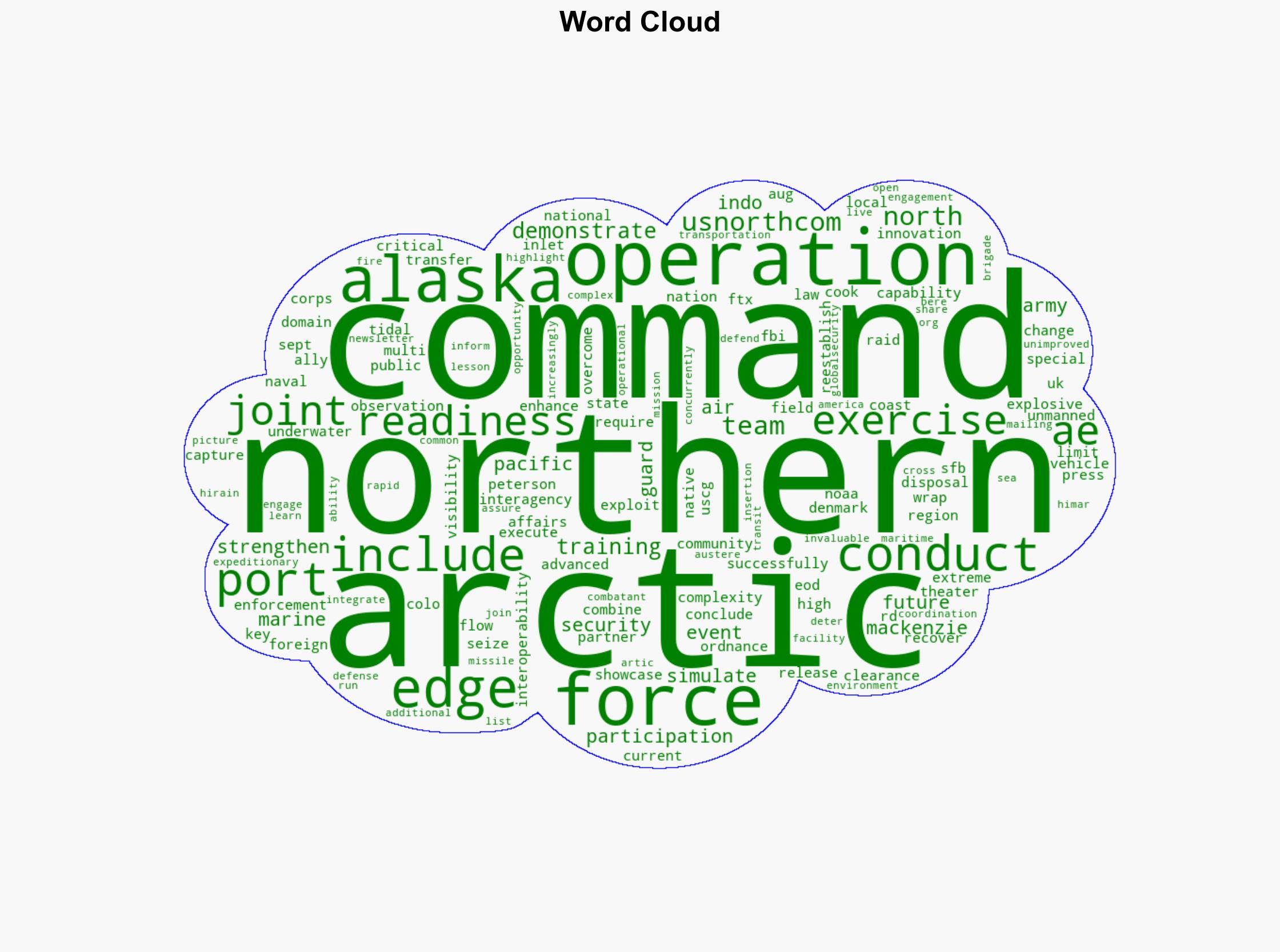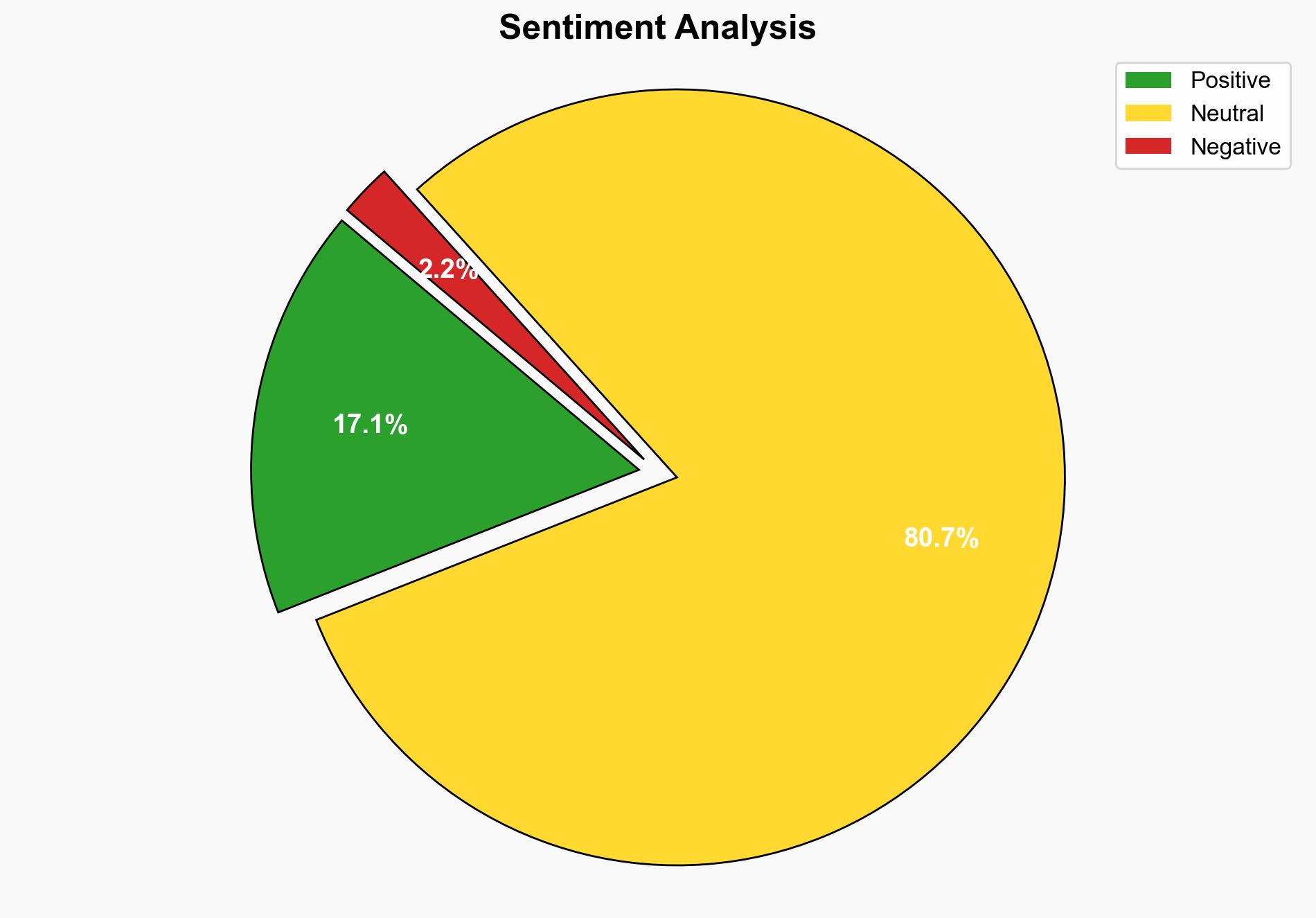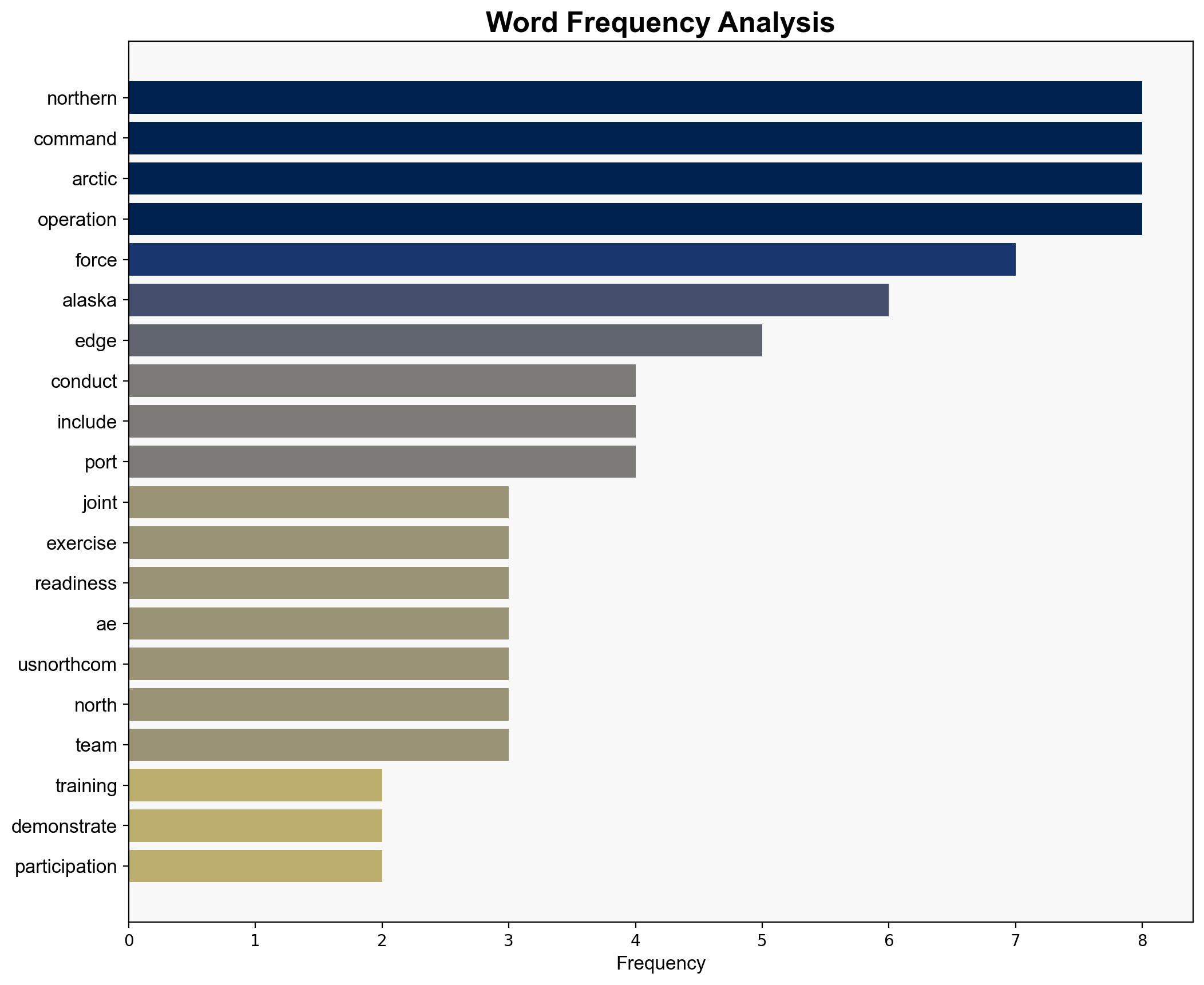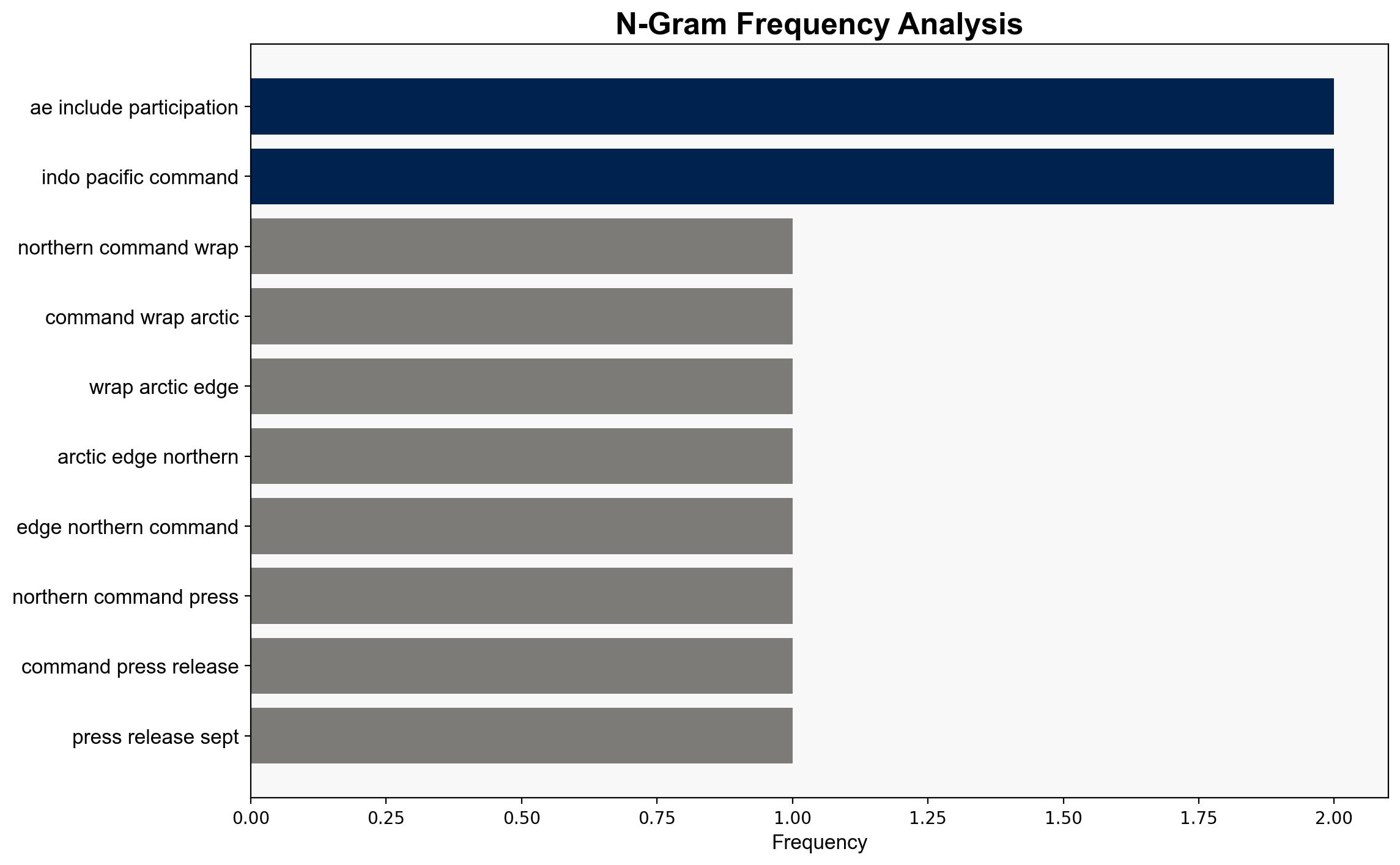US Northern Command Wraps Up Arctic Edge 2025 – Globalsecurity.org
Published on: 2025-09-06
Intelligence Report: US Northern Command Wraps Up Arctic Edge 2025 – Globalsecurity.org
1. BLUF (Bottom Line Up Front)
The Arctic Edge 2025 exercise demonstrates enhanced US military readiness and interoperability in the Arctic, a region of increasing strategic importance. The most supported hypothesis is that the exercise is primarily aimed at countering potential adversarial activities in the Arctic, particularly from Russia and China. Confidence Level: High. Recommended action includes continued investment in Arctic capabilities and strengthening alliances with regional partners.
2. Competing Hypotheses
1. **Hypothesis A**: The primary objective of Arctic Edge 2025 is to enhance US military readiness and interoperability in response to increasing geopolitical tensions in the Arctic, particularly from Russian and Chinese activities.
2. **Hypothesis B**: The exercise is primarily a routine training operation aimed at maintaining general readiness and does not specifically target any geopolitical adversary.
Using the Analysis of Competing Hypotheses (ACH) 2.0, Hypothesis A is better supported due to the involvement of multiple US military branches and allied nations, as well as the focus on complex operations such as HIMARS rapid insertion and integrated air and missile defense, which align with countering sophisticated threats.
3. Key Assumptions and Red Flags
– **Assumptions**: It is assumed that the Arctic’s strategic importance is increasing due to climate change and resource access. Another assumption is that adversarial nations are actively seeking to expand their influence in the region.
– **Red Flags**: Lack of specific mention of adversarial activities in the exercise description could indicate an underestimation of the geopolitical context. The exercise’s public portrayal as routine might mask strategic intentions.
4. Implications and Strategic Risks
The exercise underscores the Arctic’s growing strategic importance, with potential risks including increased militarization of the region and heightened tensions with Russia and China. Economic implications involve potential disputes over resource access. Cybersecurity risks may arise from increased digital infrastructure in the region. Geopolitically, the exercise could provoke adversarial responses, leading to an arms race or territorial disputes.
5. Recommendations and Outlook
- Enhance Arctic-specific military capabilities and infrastructure to maintain strategic advantage.
- Strengthen alliances with Arctic nations to ensure a unified approach to regional security.
- Monitor adversarial activities closely to anticipate and counter potential threats.
- Scenario Projections:
- Best Case: Strengthened alliances deter adversarial actions, maintaining regional stability.
- Worst Case: Escalation of military presence leads to increased tensions and potential conflict.
- Most Likely: Continued strategic posturing by all parties, with periodic diplomatic engagements.
6. Key Individuals and Entities
– US Northern Command
– UK and Denmark military forces
– Alaska National Guard
– FBI, Coast Guard, NOAA
– Alaska state and local law enforcement
7. Thematic Tags
national security threats, Arctic strategy, military readiness, geopolitical tensions




